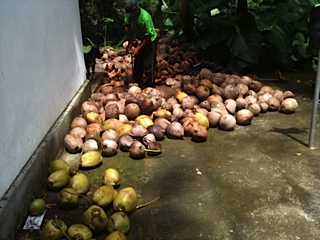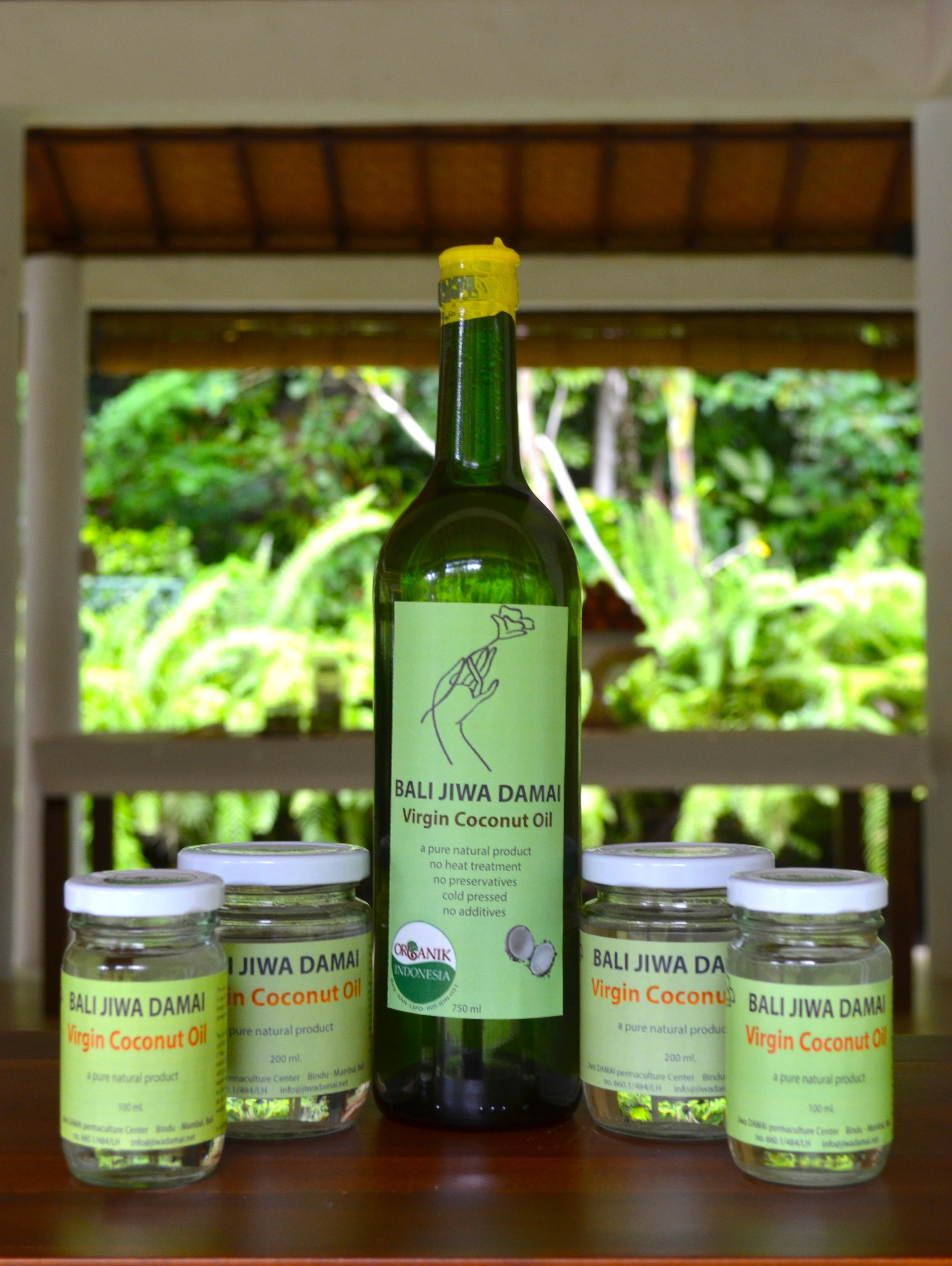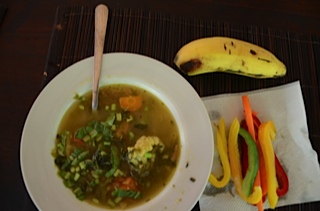Chinampas, the first in Bali, are 100% self-resourced biomaterial structures, realized by our enthusiastic volunteers from all corners of the earth.It’s been a very challenging project, to look at the muddy tangle of weeds that was the swamp and see a flourishing garden, but such is the creative nature of the permaculturist, who believes that every problem is also a solution.
The swamp--part pond, part oversized mud puddle—was in its untouched state home to a thicket of water plants and tangled, vine-like weeds. The structure of a Chinampa begins with a rectangular frame, woven from flexible strips of bamboo and staked into the mud. The first layer of the chinampas is a bed of dry, brown material—fallen coconut palm leaves primarily. Next comes green material; we used the weeds, grass, and plants harvested from clearing the swamp. Next is a layer of the rich, clay-based mud from the swamp, which forms the third and final layer. When the layers are complete, we will plant the garden on the elevated platform and trees along the perimeter. As the roots grow they will secure the structure of the chinampas, supplanting the bamboo frames, which eventually will rot away.
Chinampas, or “floating gardens,” are a subsistence agricultural technique designed by the Aztecs, originally constructed along the shallow lakebeds in the Valley of Mexico, as a resourceful way of turning stagnant wetlands into thriving agricultural gardens.
This project is the brainchild of volunteer Stephanie Garvin, and has been executed by our international volunteers, Kris (Sweden), Hannah (Germany), Egle (Lithuania), Mika (Germany), Celsae (USA), Gloria (USA), Marina (Slovakia), and Luz (Argentina). We appreciate their hard work and commitment!

























